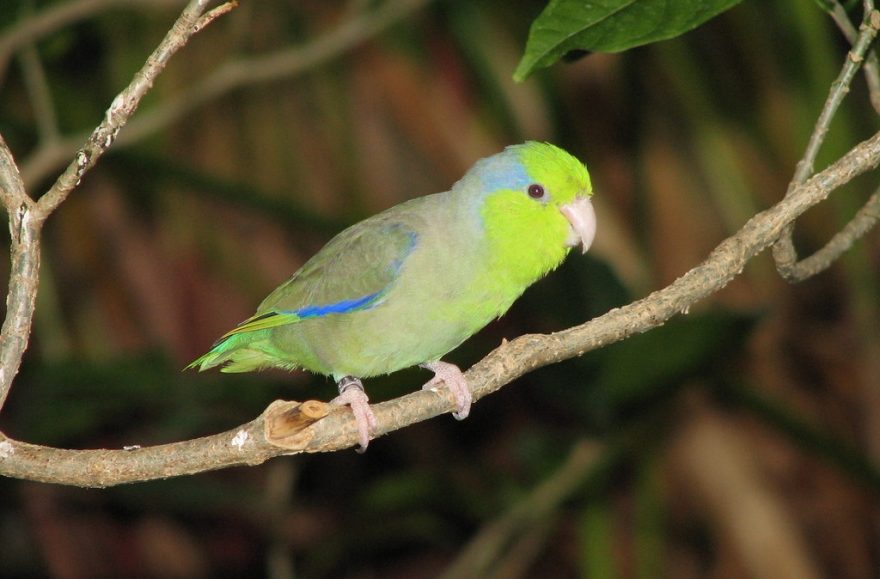The Pacific parrotlet is a small parrot native to the South American nations of Peru and Ecuador. They are commonly kept as pets in much of the world, however they are quite rare in Australian aviculture. It is only in the last five years (2014—) that they have become reasonably established, and prices are beginning to fall.

Housing & Compatibility
Pacific parrotlets can be aggressive when breeding and should be housed in single-pair aviaries. Parrotlets are active birds that require a reasonable amount of flying space to get the exercise they require. The aviary should be at least 2-3 meters (6.5-10 feet) in length and contain boredom-busting environmental enrichment, such as swings and toys.
Non-toxic leaves and branches should be provided for chewing. They will be destructive to foliage in a planted aviary.
Diet & Feeding
Seed forms the basis of the Pacific Parrotlet’s diet. A quality mix designed for small parrots or lovebirds will be acceptable. Seed lacks many essential vitamins and minerals which must be compensated for by introducing other foods. Sprouted seed increases the nutritional value of seed and is a cheap way to improve your birds health. Freshly grown green seed heads should also be offered frequently.
Pacific Parrotlets also require a wide variety of fruit and vegetables to ensure good health. They enjoy sweet juicy fruits such as apple and pear, but it’s important to also provide more-nutritious green foods such as broccoli, kale and bok choi.
Pellets can be used a more nutritious alternative to seed, but many birds are unwilling to consume them.
Some birds will consume live food during the breeding season. Insects such as mealworms and termites are a great source of protein and should be provided if the birds are willing to consume them.
Breeding
Pacific parrotlets can breed at almost any time of the year, however breeding should be discouraged during winter and extremely hot weather.
They breed in hollow logs or nest boxes lined with sawdust or pine shavings. A nest box designed for a lovebird or similar small parrot is ideal, but consider that different birds have different preferences for the size and shape of their box.
Most parrots prefer a nest box opening just large enough to squeeze through, so a separate hatch for cleaning and inspection should be added to the nest box. Different nesting receptacles should be offered to determine which the pair prefers to use. Disused boxed should be removed when laying has commenced.
Pacific Parrotlets generally lay between 4 and 8 eggs. Young or inexperienced birds may lay as few as two. The hen will incubate the eggs alone for roughly three weeks. After hatching, the young birds will remain in the nest for four weeks before fledgling. They will be fully independent from their parents approximately two weeks after fledging.
Young birds should be removed from the aviary once they have become independent to prevent aggression and to encourage the hen to commence laying a second clutch.
Each pair should be limited to a maximum of two clutches per year to prevent exhaustion from over-breeding.
Sexing
Only male parrotlets have blue feathers on their wings. Albino birds and some variations of the blue mutation can be difficult to visually sex. DNA sexing may be required for these birds.
Mutations
Many colour mutations have been established, including blue, yellow, white, pastel, fallow, pied, and dilute. Normal-coloured birds (green) are becoming increasingly more difficult to acquire. In Australia, a pure normal bird is practically unheard of, and normal appearance birds can demand a higher price than mutations.
Health
A strict worm control regime and regular preventative treatment for bacterial and fungal infections is critical to ensure the long-term health of any bird.
A well cared for pacific parrot can live for 15-20 years.
Hi
My parrotlets are currently on their 2nd clutch of eggs – the first one was not viable. I have noticed my female has developed a bald patch on her chest area where she’s covering her eggs. Is this ok?